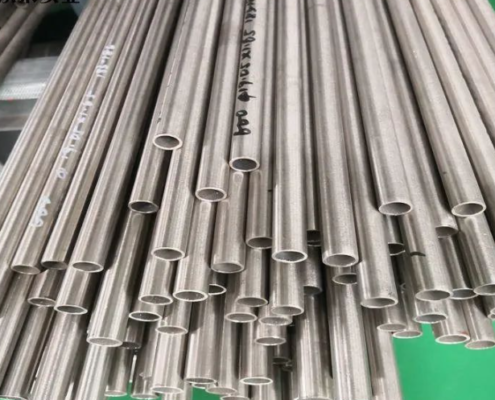Monel400 Product Features
Stainless steel contains a certain amount of chrome alloy elements, which can form a strong oxidized film on the surface of the steel that is insoluble in some media so that the metal is isolated from the external medium without chemical action. Therefore, it is less prone to rust than other steel grades, so the choice of alloying element composition is crucial.

Monel400 chemical element composition:
C: ≤0.3
Si: ≤0.50
Mn: ≤2.0
Ni: ≥63
Cu: 28 to 34
S: ≤ 0.024
Fe ≤ 2.5
Monel400 corrosion resistance:
Corrosion resistance is generally superior to nickel copper. It is more resistant to corrosion by reducing medium than pure nickel and is more resistant to corrosion by phosphoric acid and carbon than corrosion by pure copper. In particular, it is resistant to corrosion by hydrochloric acid and has excellent corrosion resistance to hot concentrated alkali. It has strong corrosion resistance in fluorine gas, hydrochloric acid, and their derivatives. At the same time, it is more resistant to corrosion in seawater than copper-based alloys.
Monel400 is a deformable nickel-copper-based nickel-based alloy with good resistance to seawater corrosion and chemical corrosion and resistance to chloride stress corrosion cracking. This alloy is>In most water corrosion conditions, Monel400 not>The temperature at which Monel400 operates continuously in the air is generally around 600 ° C. In high-temperature steam, the corrosion rate is less than 0.026 mm/a. Due to its high nickel content, Monel400 alloy can withstand corrosion under anhydrous ammonia and ammoniation conditions below 585 °C.
Monel400 uses:
The main chemical formations in stainless steel such as marine heat exchangers, seawater desalination equipment, salt production equipment, marine and chemical processing equipment, propeller shafts, pumps, water tanks, etc., let us introduce four kinds of things today. Common chemical composition and several heat treatment methods and features:
1 Nickel is>2 Chromium is also>3 Copper as>4 molybdenum as one of the auxiliary alloys can obviously improve the hardenability and heat strength of the steel, prevent temper brittleness, and improve remanence and coercivity. The Hastelloy is essentially a nickel-molybdenum alloy.
Heat treatment methods and features:
1 Solid solution strengthening is an important form of metal strengthening, which increases the strength and hardness of metals by forming solid solutions. When the solute content is appropriate, the strength and hardness of the material can be significantly improved, while the plasticity and toughness are not significantly reduced.
2 Aging enhancement is divided into artificial aging and natural aging. Natural aging strengthening is to strengthen the alloy during room temperature placement; artificial aging strengthening is to strengthen the alloy during low-temperature heating. Both are based
3 Precipitation strengthening is premised>
4 Grain boundary strengthening occurs because the grain boundary of the alloy is weak at high temperatures, and the addition of trace amounts of boron, zirconium, and rare earth elements can improve the grain boundary strength.


